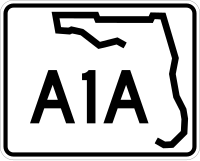
Photo from wikipedia
Landslides commonly occurs in hilly areas and causes an enormous loss iof life and property every year. National highway-1D (NH-1D) is the only road link between the two districts (Kargil… Click to show full abstract
Landslides commonly occurs in hilly areas and causes an enormous loss iof life and property every year. National highway-1D (NH-1D) is the only road link between the two districts (Kargil and Leh) of Ladakh region that connects these districts with Kashmir valley. The landslide failure record of the recent past along this sector of the highway is not available. The present study documents landslide susceptible zones and records occurrence of 60 landslides during the last 4 years showing an increasing trend in the occurrence of landslides over these years in this sector. The landslide susceptibility zonation map has been prepared based on the numerical rating of ten major factors viz. slope morphometry, lithology, structure, relative relief, land cover, landuse, rainfall, hydrological conditions, landslide incidences and Slope Erosion, categorised the area in different zones of instability based on the intensity of susceptibility. The landslide susceptibility map of the area encompassing 73.03 km2 is divided into 150 facets. Out of the total of 150 facets, 85 facets fall in low susceptibility zone covering 43.56 km2 which constitute about 59.65% of the total area under investigation with a record of 5 landslides; 40 facets fall in the moderate susceptibility zone covering 16.94km2 which constitutes about 23.19% of the study area with a record of 20 landslides; and 25 facets fall in the high susceptibility zone covering 12.53 km2 which constitute about 17.15% of the study area with a record of 35 landslides. Most of the facets which fall in HSZ are attributed to slope modification for road widening.
Journal Title: Journal of the Geological Society of India
Year Published: 2018
Link to full text (if available)
Share on Social Media: Sign Up to like & get
recommendations!